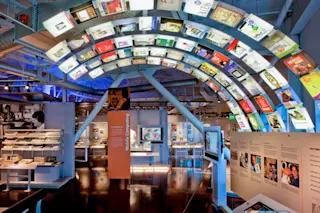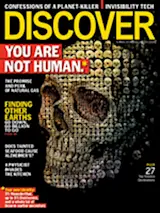THE EVOLUTION OF THE GADGETVisit the ancestors of your gear Many of us are thrilled to ditch last year’s tech for the latest must-have gizmo. But Gordon Bell, an early employee of the computer maker Digital Equipment Corporation, hated to see obsolete computers sent to the scrap heap. Bell’s personal collection—which includes a World War II–era Enigma encryption machine and a century-old hand-crank calculator—now forms the core of the most comprehensive trove of computer artifacts in the world, with more than 100,000 items and counting. Today you can visit this archive of our technological past at the Computer History Museum in Mountain View, California, which reopened this past January following a two-year, $19 million makeover that resulted in the 19-gallery exhibition “Revolution: The First 2000 Years of Computing.”
The exhibit tracks milestones in the progress of computational technology from the abacus to your smart phone. Check out a preserved chunk ...















